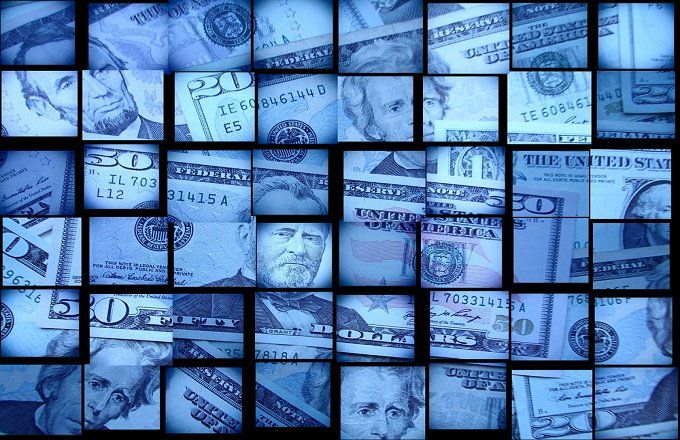
The U.S. Federal Reserve controls the money supply in the United States. While it doesn’t actually print currency bills itself, it does determine how many bills are printed by the Treasury Department each year.
Key Takeaways
- The U.S. Federal Reserve controls the supply of money in the U.S.
- When it expands the money supply using monetary policy tools, it is often described as printing money.
- The job of actually printing currency bills belongs to the Treasury Department’s Bureau of Engraving and Printing.
- But the Fed determines exactly how many new bills are printed each year.
- Quantitative easing, an asset-purchase program, is one way the Fed increases the money supply in times of financial crisis.
The Fed Prints Money
People in the media often talk about the Fed printing money. What the media usually mean is not that the central bank is actually producing dollar bills but that it is increasing the nation’s supply of money. For instance, it did this during the Great Recession and during the pandemic.
To increase the money supply, it primarily uses three monetary policy tools.
- It can ease its reserve requirements for banks, which makes more money available for banks to lend.
- It can change the discount rate at which it lends money to financial institutions, which can make it more attractive for them to borrow.
- And it can conduct routine open market operations whereby it purchases Treasury securities from financial institutions.
Steve Meyer, a senior advisor to the Fed’s Board of Governors, explains how payment for the last is made. “You may wonder how the Fed pays for the bonds and other securities it buys,” he says. “The Fed does not pay with paper money. Instead, the Fed pays the seller’s bank using newly created electronic funds and the bank adds those funds to the seller’s account.”
Each policy tool can increase the funds in the money supply, which means more money is available to lend to consumers and businesses. So, by printing money, the Fed can spur economic activity and growth.
The Treasury Prints Currency
The job of actually printing the money that people withdraw from ATMs and banks belongs to the Treasury Department’s Bureau of Engraving and Printing (BEP), which designs and manufactures all paper money in the U.S. (The U.S. Mint produces all coins.)
However, the amount of currency printed by the BEP each year is determined by the Fed, which submits an order for it to the BEP. The Fed then distributes that currency via armored carrier to its 28 cash offices. In turn, that is distributed to 8,400 banks, savings and loans and credit unions across the country.
For the 2023 fiscal year, the Fed’s Board of Governors ordered 4.5 billion to 8.6 billion Federal Reserve notes—the official name of U.S. currency bills—valued at $166.6 billion to $190.5 billion.
How the Fed Creates Money With Quantitative Easing
Quantitative easing (QE) is the name for the government’s large-scale purchases of various intermediate- and long-term debt securities that it has conducted to reduce longer-term interest rates, increase the money supply, and boost demand. It has done this periodically to promote economic activity during times of dire financial crisis (for example during the financial crisis of 2008).
Under its QE program, the Fed has purchased Treasury bonds, mortgage-backed securities, and corporate bonds. When it takes such action, it conveys a message of support to the markets that can result in a stabilizing effect and prevent panic.
To aid an economy battered by the Great Recession, the Federal Reserve added trillions to bank reserves by purchasing long-maturity bonds, mortgages, and agency securities through its quantitative easing effort from 2009 to 2014. By 2017, bank reserves amounted to over over $4 trillion.
Differing Views of QE
QE is seen as controversial by some. Critics of QE have argued it would lead to hyperinflation, while its defenders have said it’s been a necessary response to extraordinary economic and financial conditions and an absence of an aggressively expansionary fiscal policy.
The moderate inflation and relatively strong economic recovery in the years that followed the Great Recession were seen by many as vindicating the Fed’s approach.
Why Does the Fed Still Place Currency Orders?
It orders currency because people and businesses still want actual cash and see it as proof of the availability of funds. The government understands that printed currency allows for, and encourages, ongoing commercial transactions.
When Does the Fed Increase the Money Supply?
Normally, you’ll see the Fed print money, or increase the money supply, when economic activity slows. It does so to spur demand for products and services and economic growth.
Is the $2 Bill Still Printed?
Yes, it is. In fact, due to its popularity, the Fed’s 2023 currency order was revised to include 64,000 to 128,000 $2 bills when none had been ordered originally for the year.
The Bottom Line
The Treasury Department’s Bureau of Engraving and Printing handles the printing of currency in the U.S. But the Federal Reserve is the organization that places orders for it and then distributes it.
When it’s said that the Fed is printing money, what’s actually meant is that the Fed is increasing the money supply using its monetary policy tools, which include buying securities in the open market.
Correction—Sept. 19, 2023: A previous version of this article incorrectly associated Quantitative Easing with the Federal Reserve’s normal open market operations.



